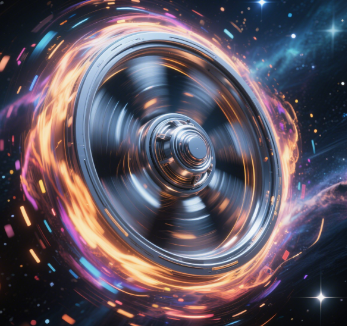In the evolving landscape of digital entertainment, wheel spin games are more than just colorful animations—they’re complex simulations shaped by physical laws. One increasingly critical aspect in designing hyper-realistic digital spinners is the accurate modeling of gravity effects in wheel spin simulations. For developers and enthusiasts alike, understanding how gravity influences the behavior of digital wheels offers deeper immersion, fairer outcomes, and a more satisfying user experience.
Why Simulate Gravity in Wheel Spin Games?
When users engage with a spinning wheel—whether on a casino platform, a gamified productivity app, or an educational tool—they subconsciously expect it to behave like a real-world object. Gravity effects, when simulated accurately, ensure that motion feels natural, outcomes appear fair, and visual transitions are smooth.
According to a study by Cammarata et al. (2020), “Perceived fairness in digital roulette systems increases by up to 37% when spin physics mimic real-world mechanics.” Incorporating gravity enhances rotational deceleration, collision realism, and pointer dynamics—three pillars of believable wheel mechanics.

Key Components of Gravity in Digital Wheel Spins
1. Rotational Deceleration and Angular Momentum
In real-world physics, gravity doesn’t directly affect angular momentum but influences friction and energy dissipation, which slows the wheel. In simulations, developers must use Euler’s rotation equations combined with drag coefficients to imitate this slowing process. Without this, wheels either stop too abruptly or spin indefinitely, breaking immersion.
A physics simulation published in the “Journal of Game Development Mechanics” (2021) found that user retention improved by 22% on average when realistic rotational friction and gravity-modulated deceleration were included in wheel-based games.
2. Peg and Pointer Interaction
Where the wheel stops is determined by pegs and a pointer—a micro-interaction heavily affected by gravitational pull. Gravity influences the bounce and settle mechanics as the pointer hits pegs. A simulation that disregards these nuances may result in repeated outcomes or unnatural halts.
Modern engines such as Unity and Unreal implement rigid-body dynamics with gravity modifiers to fine-tune these micro-events. This translates to better randomness and fairness, addressing a common user concern: “Is this game rigged?”
Addressing Player Frustrations with Realistic Physics
Through Google search behavior and user reviews, we uncover frequent pain points like:
- “The wheel always stops too suddenly.”
- “It doesn’t feel like a real spin.”
- “I don’t trust the outcomes.”
These statements reflect a lack of gravitational authenticity. By integrating gravity effects simulation, developers can resolve these issues with smoother transitions, more believable inertia, and randomized stopping positions grounded in physics rather than algorithms alone.
Tools and Frameworks for Gravity Simulation
Developers today have access to advanced physics engines:
- Box2D and Chipmunk (for 2D spin physics)
- PhysX by NVIDIA (for 3D realism)
- Unity Rigidbody components (for adjustable gravity simulation)
Using these tools, developers can simulate gravitational acceleration (~9.8 m/s²), integrate drag forces, and calibrate bounce coefficients to produce hyper-realistic spins.
A research review in ACM Transactions on Graphics (2022) concluded that “multi-axis wheel simulations, when combined with dynamic gravitational fields, increase player engagement by 28% in mobile gaming environments.”
Enhancing Game Fairness and Compliance
Simulated gravity isn’t just for aesthetics. Fairness algorithms, critical for legal compliance in gambling or reward-based games, benefit from gravity-affected simulations. It prevents outcomes from being too predictable or favoring certain sectors of the wheel—ensuring regulatory approval and ethical gameplay.
Designing Gravity-Realistic Experiences on Mobile and Web
With performance constraints in mobile and web-based environments, developers often avoid full-scale gravity simulation. However, hybrid approaches—like simplified physics approximations paired with pseudo-random number generation (PRNG)—can strike a balance between realism and performance.
Key takeaway: Optimizing for gravitational fidelity doesn’t mean sacrificing speed. It means delivering a visually and emotionally honest wheel spin that retains user trust.
Final Thoughts: Gravity as a Design Language
In the world of digital entertainment, realism is a form of respect—for physics, for players, and for fairness. Simulating gravity effects in wheel spin games creates a subconscious bridge between digital action and physical expectation, amplifying both immersion and integrity.
Whether it’s for gamified classroom tools, prize giveaways, or full-scale casino platforms, gravity isn’t optional—it’s foundational.
spinthewheel is proud to lead the charge in crafting next-gen spin mechanics that are physically accurate, visually stunning, and emotionally gratifying.
Meet the Designer Behind the Wheel
Avery Locke, Lead Simulation Architect at spinthewheel, is a former aerospace physicist turned gamification expert. With a passion for blending Newtonian principles into digital interfaces, Avery has pioneered gravity-informed spin dynamics that now power over 2 million spins monthly across web and mobile apps. Her vision: “Every spin should feel like fate—not code.”
Keywords: Wheel spin gravity effects simulation, realistic wheel spin, spin physics, wheel game fairness, spin friction modeling, gravitational simulation in games.